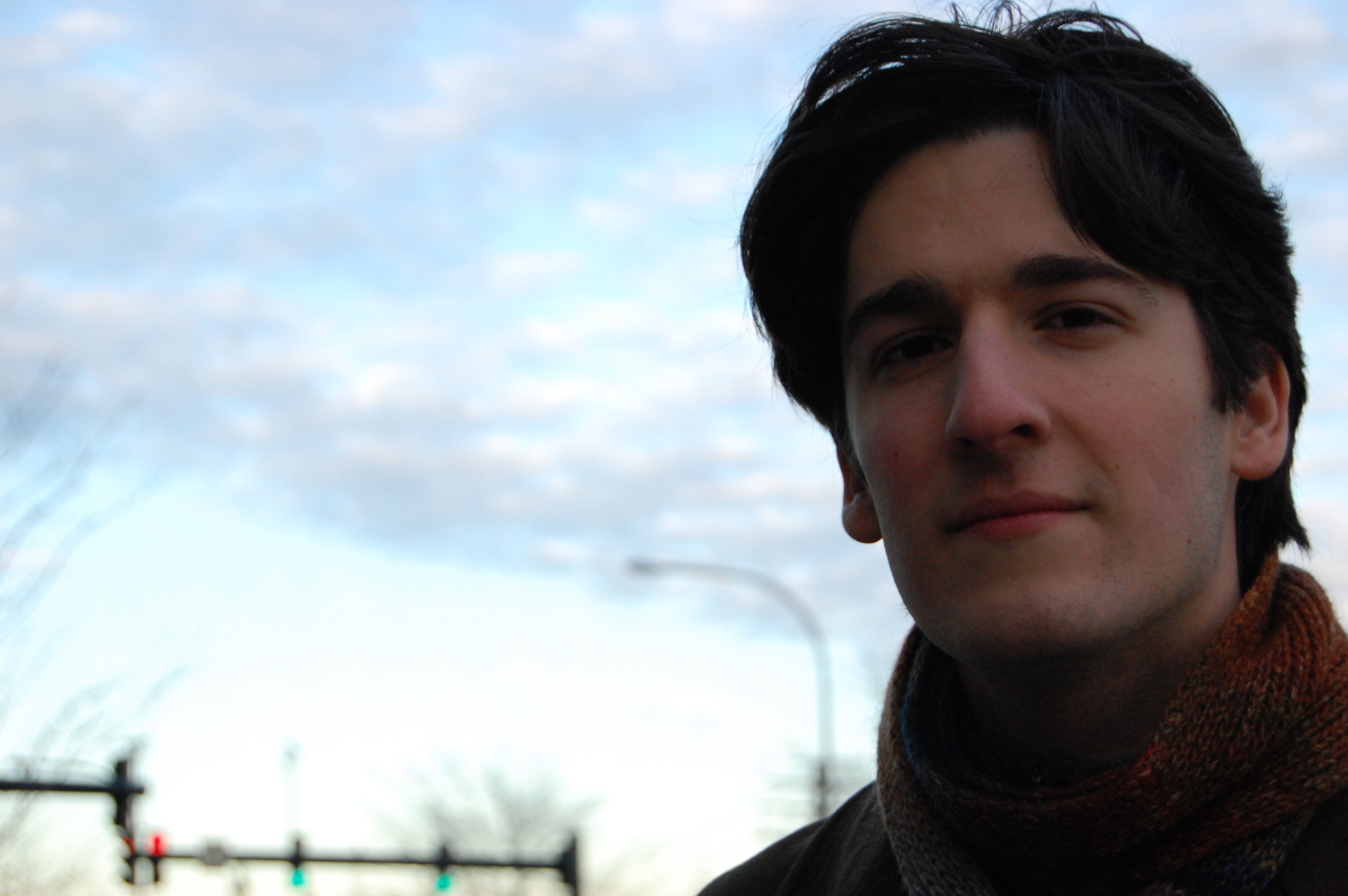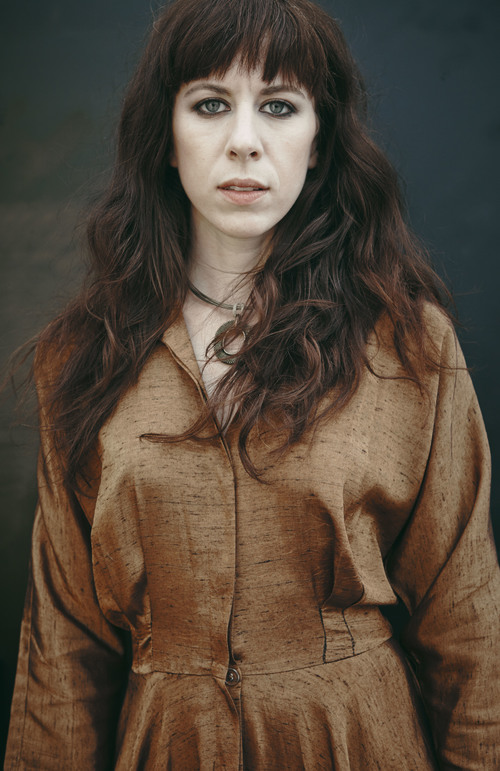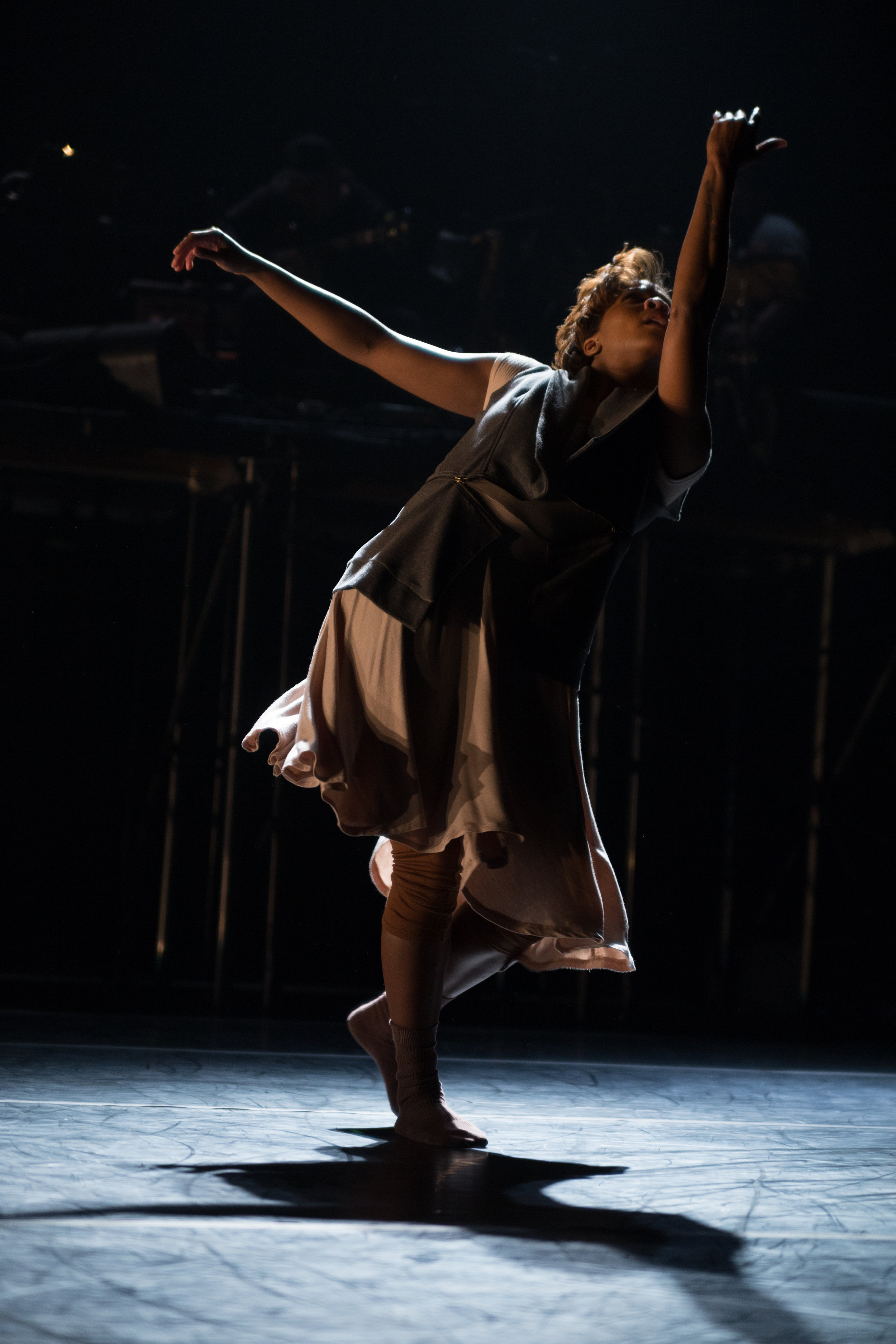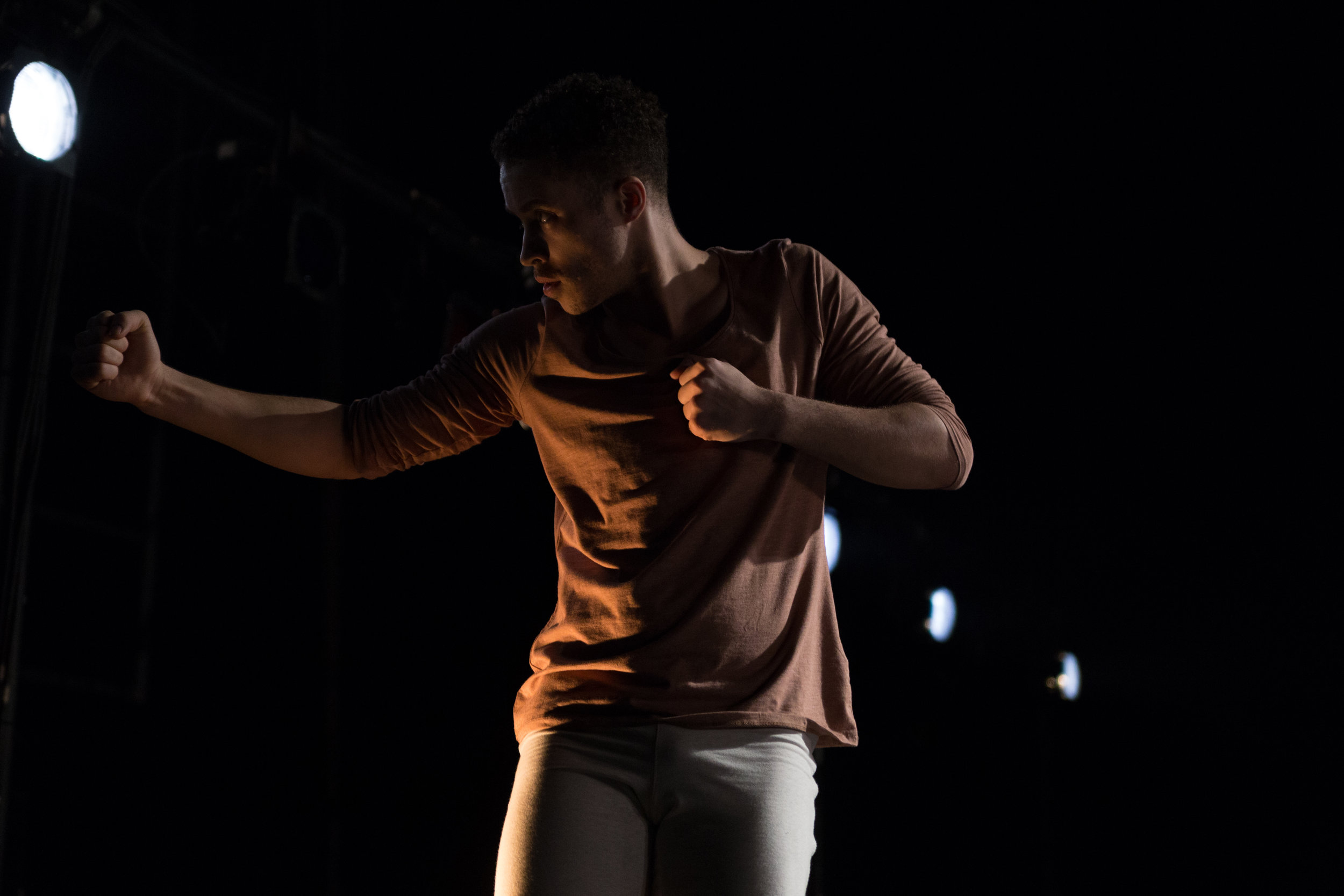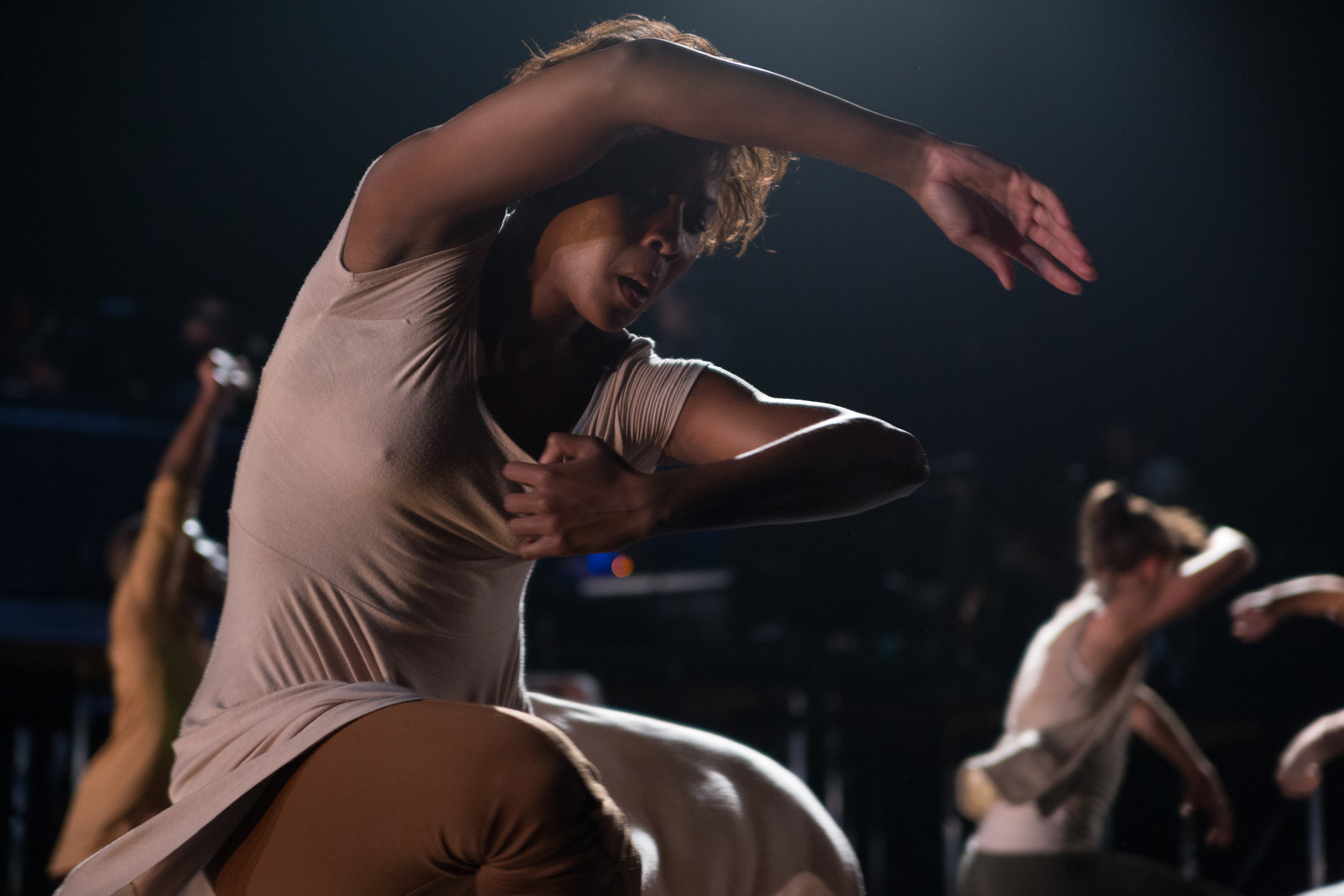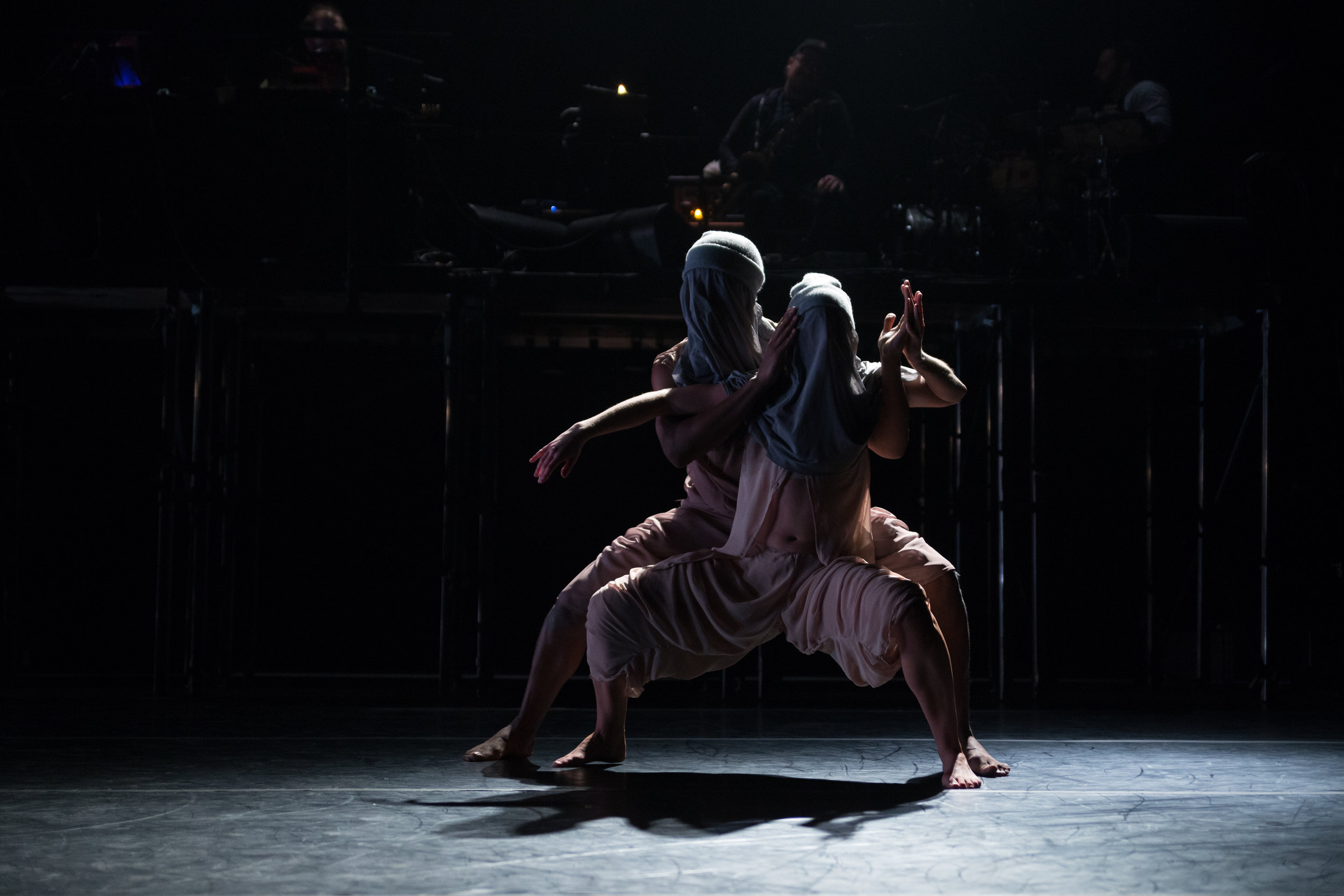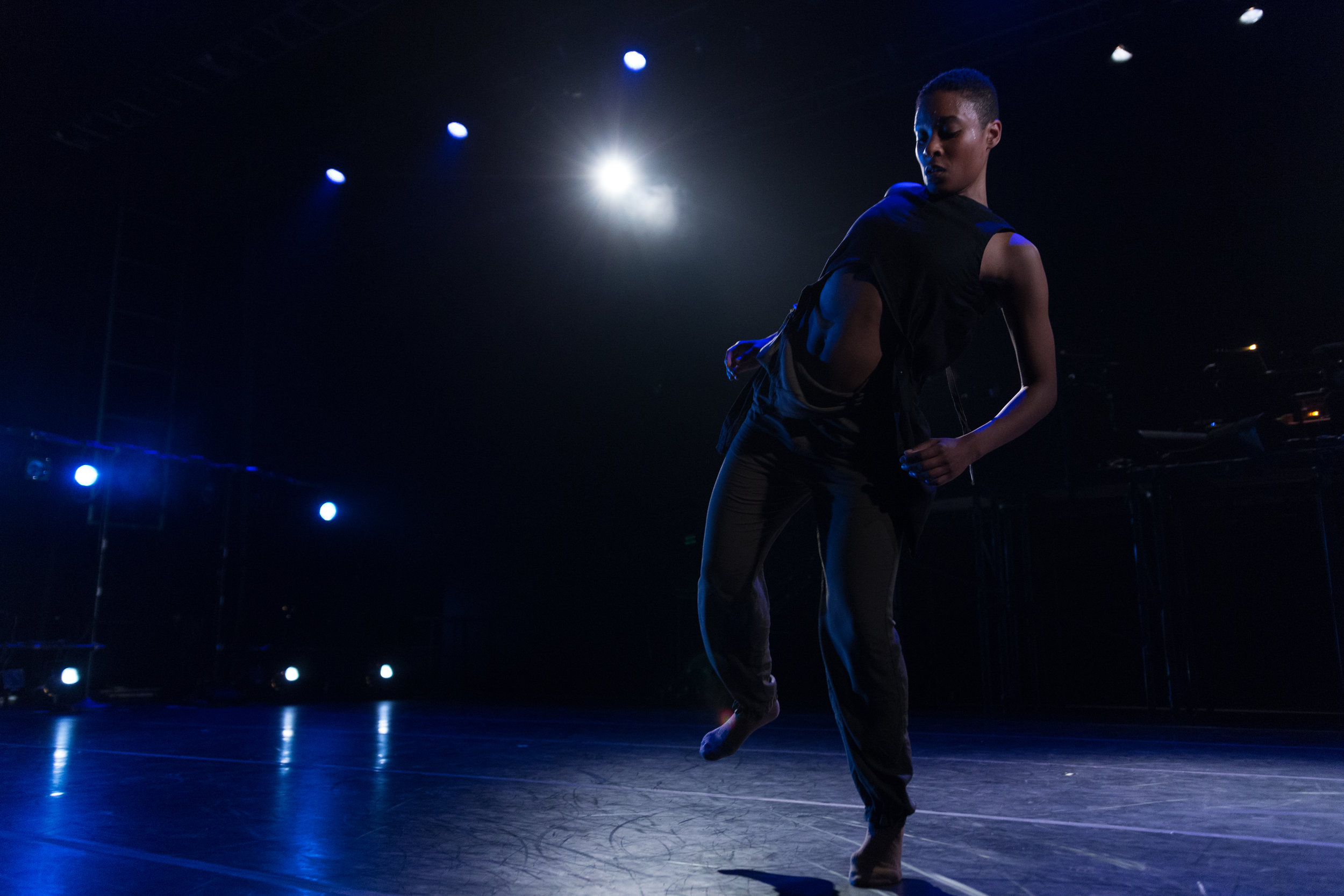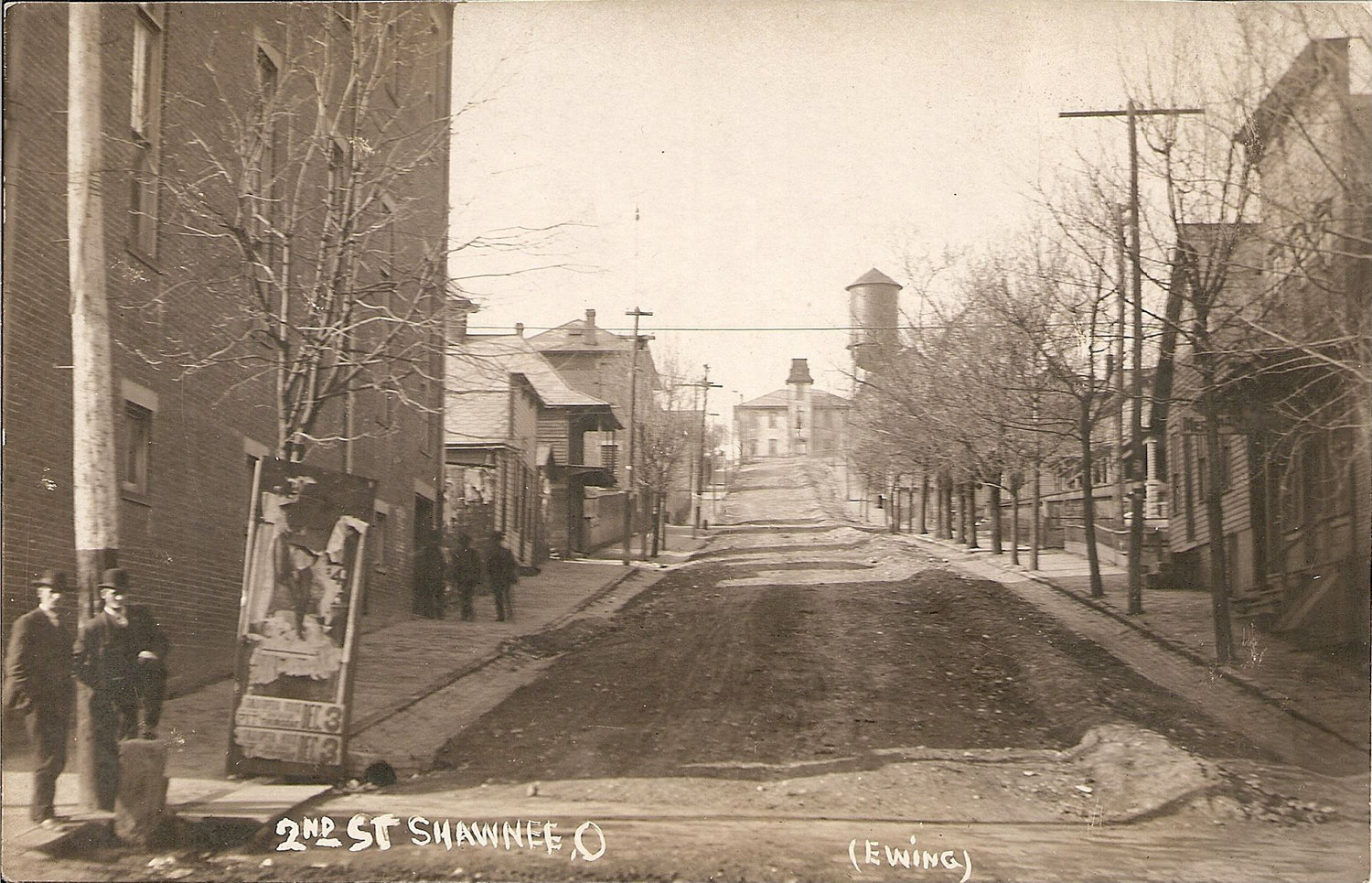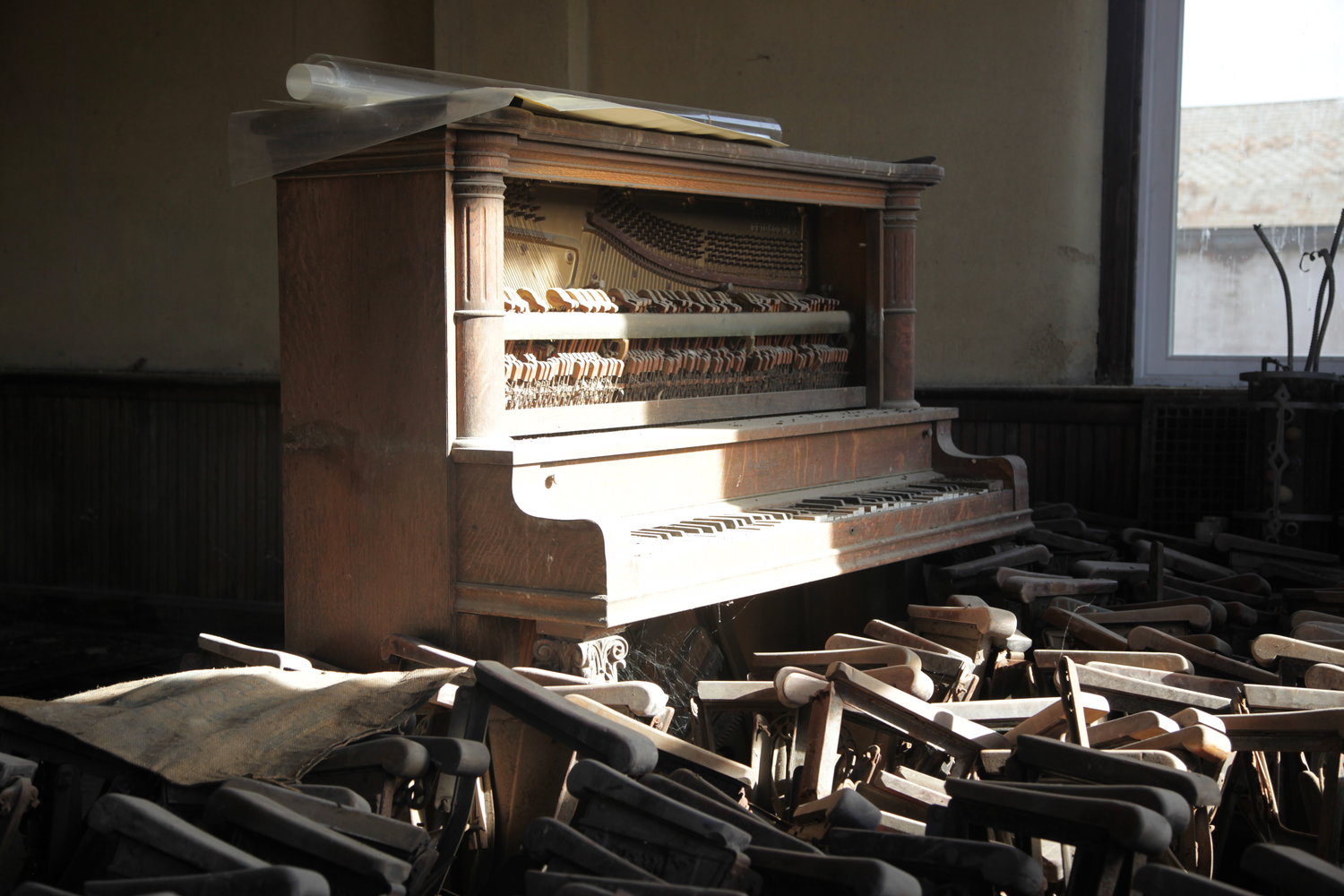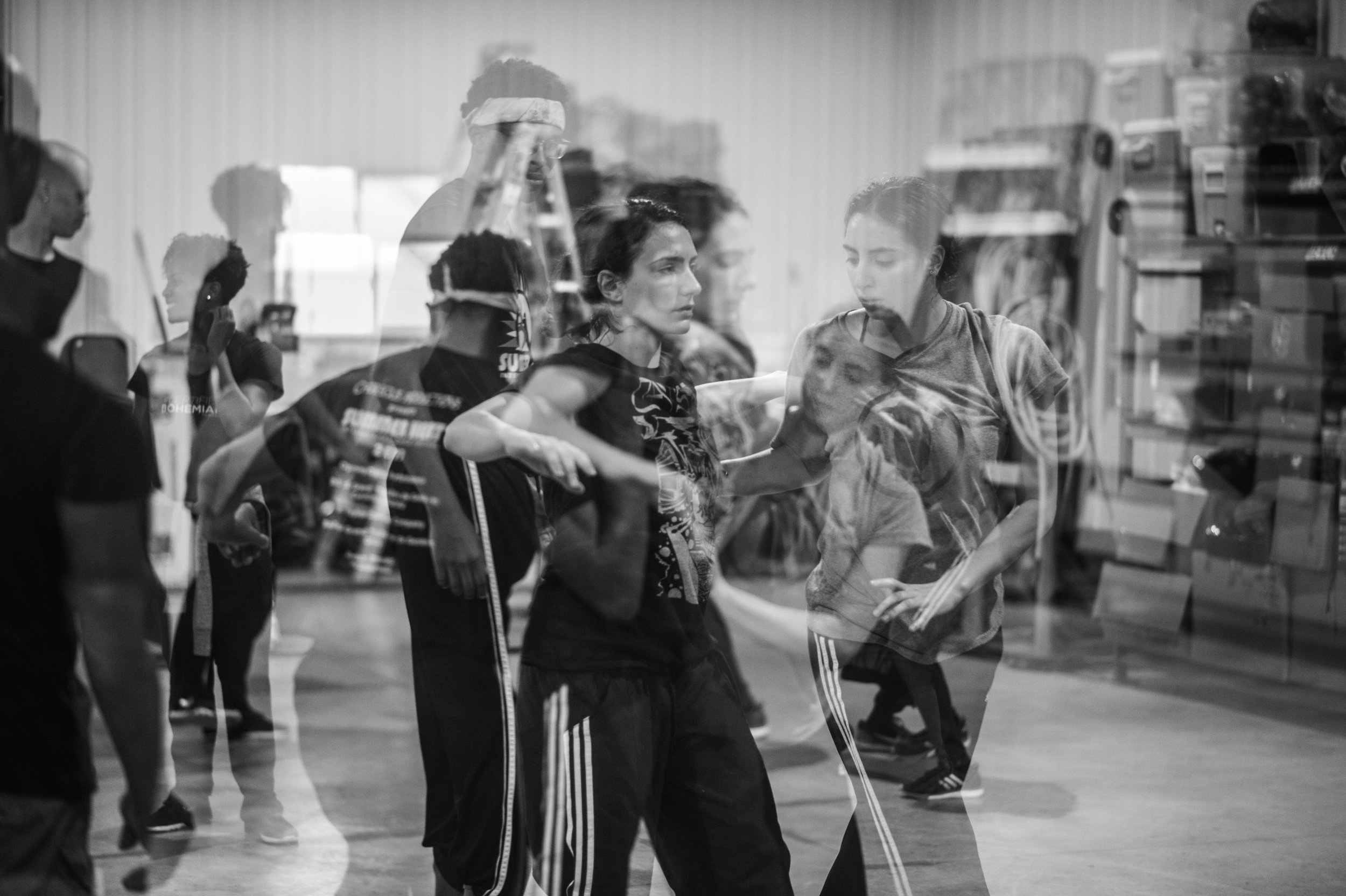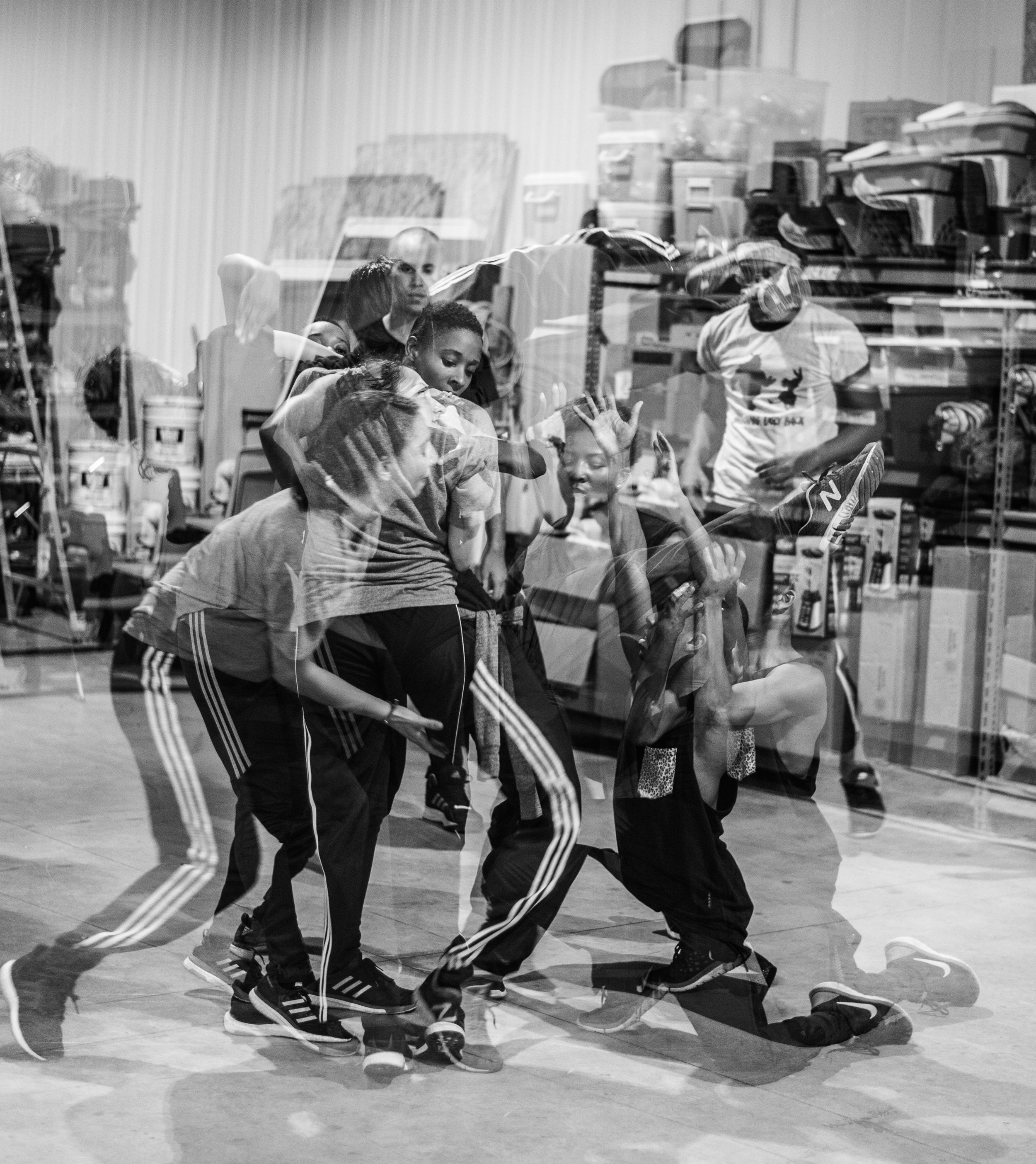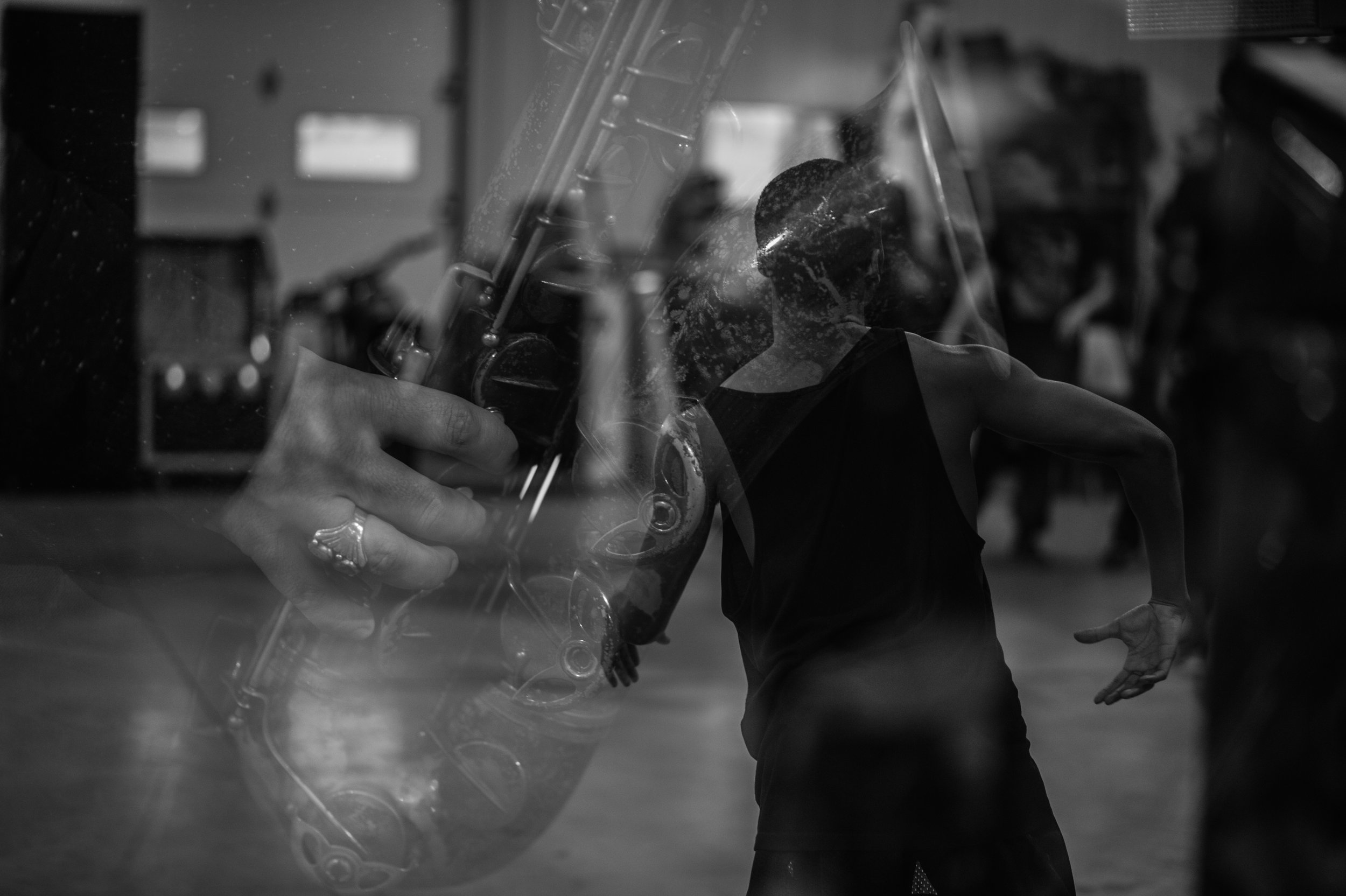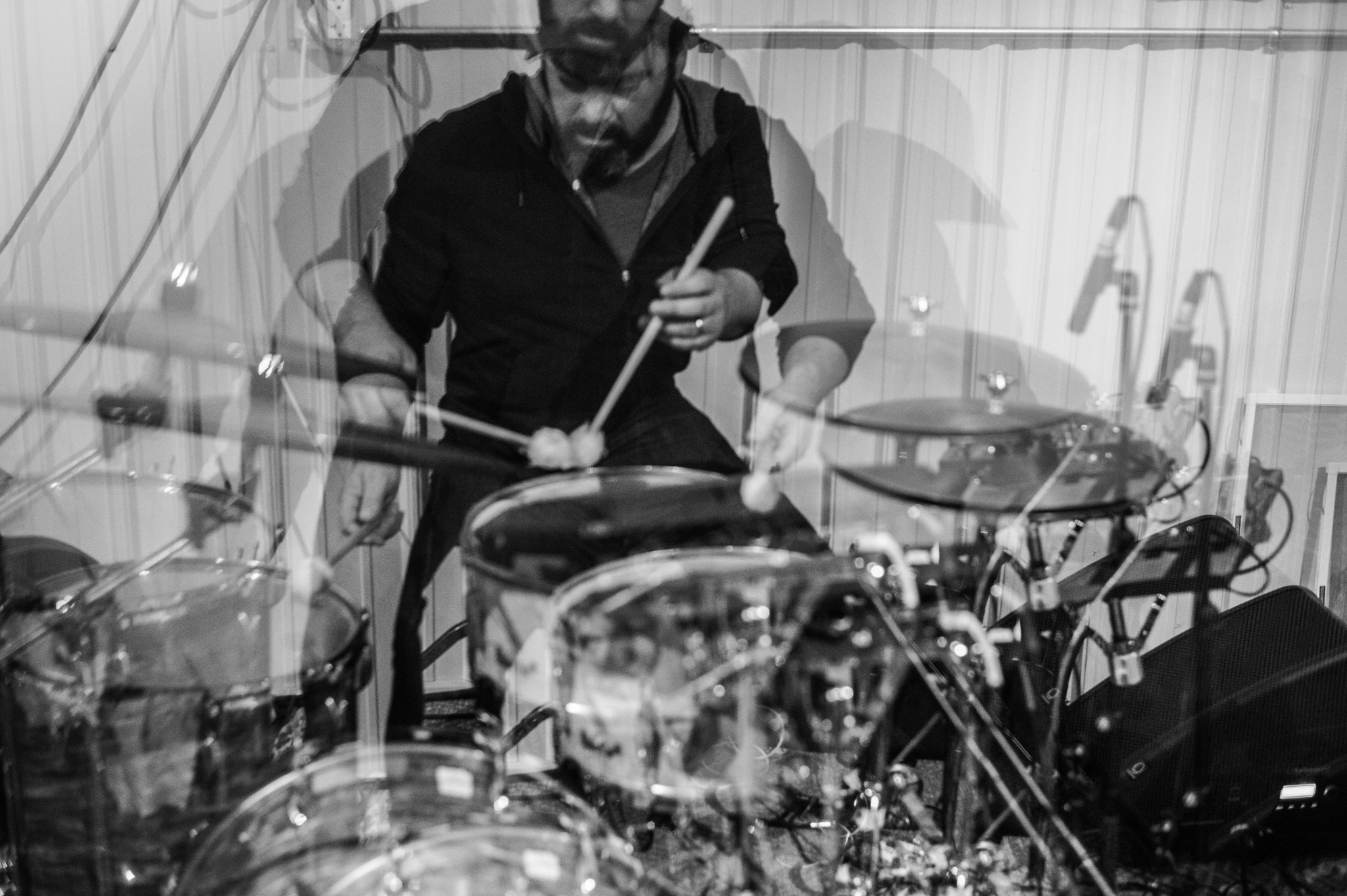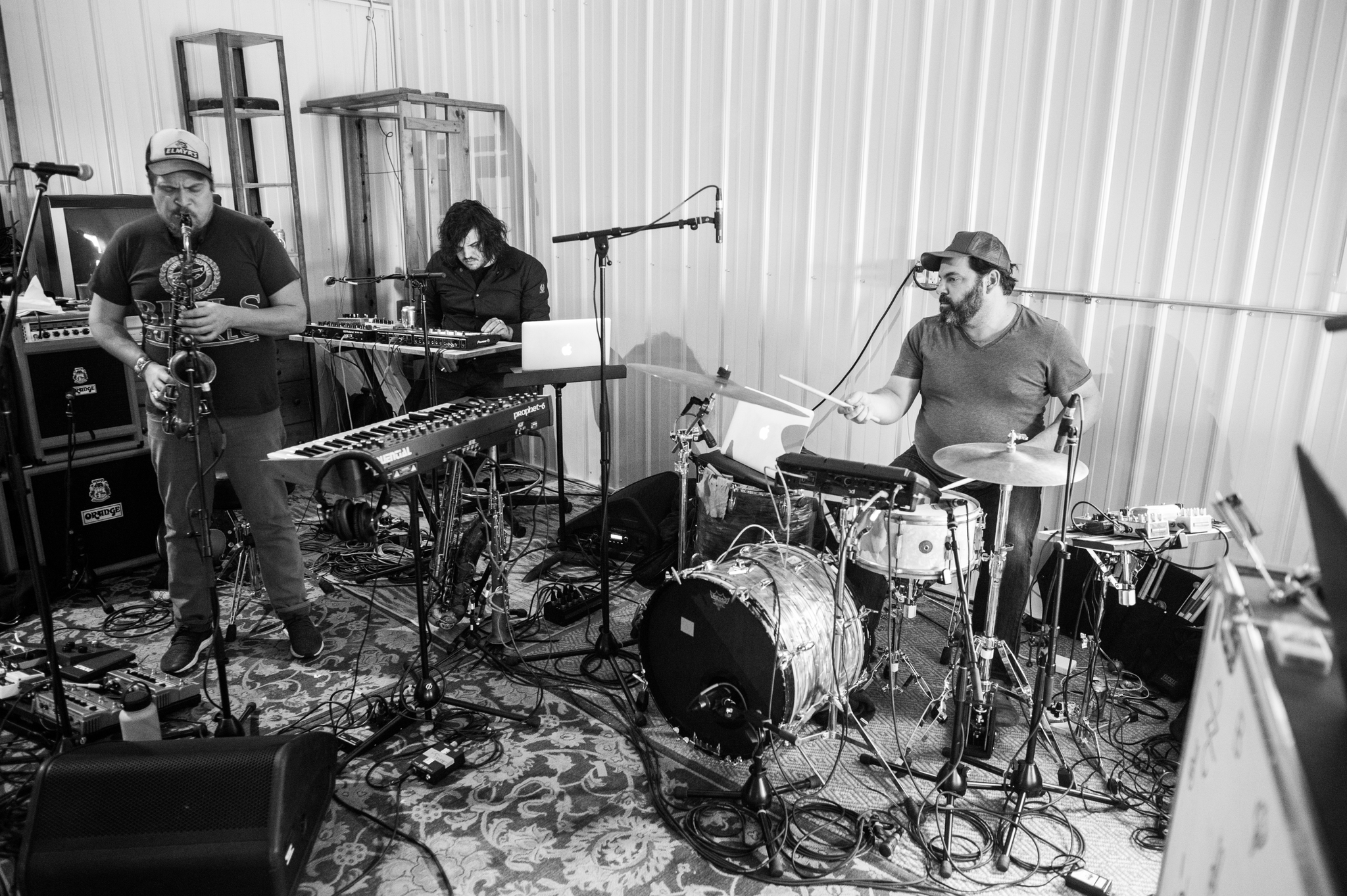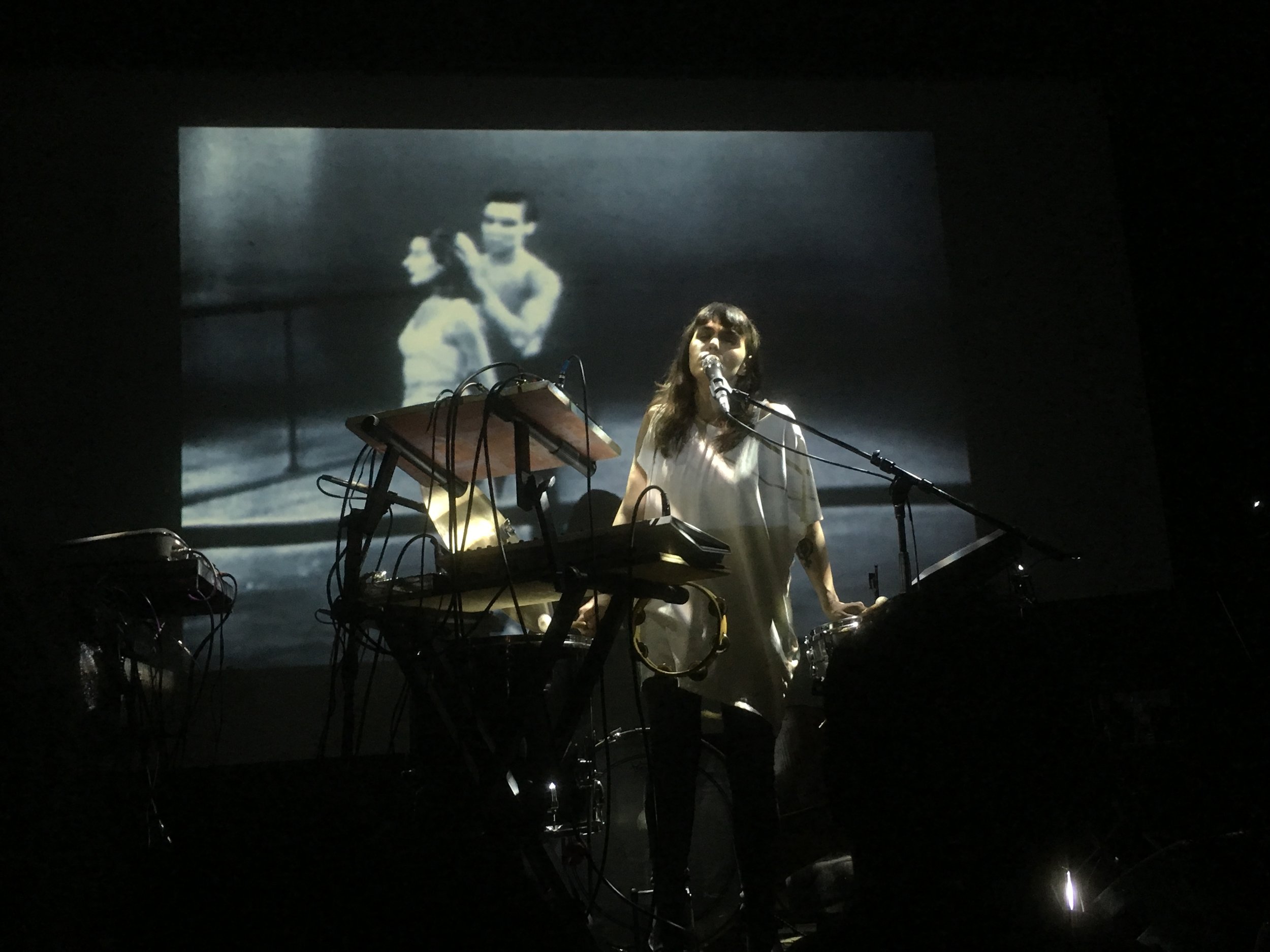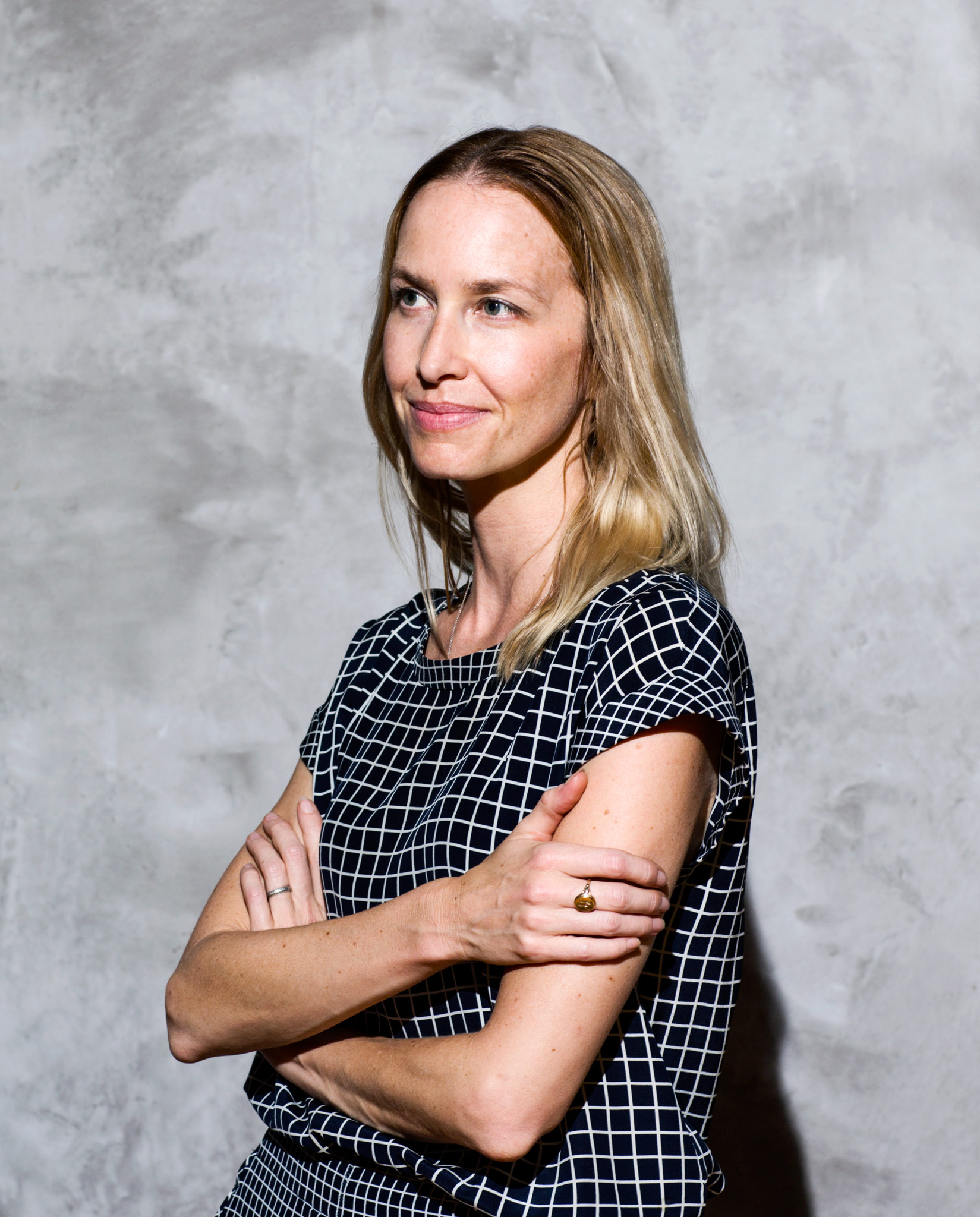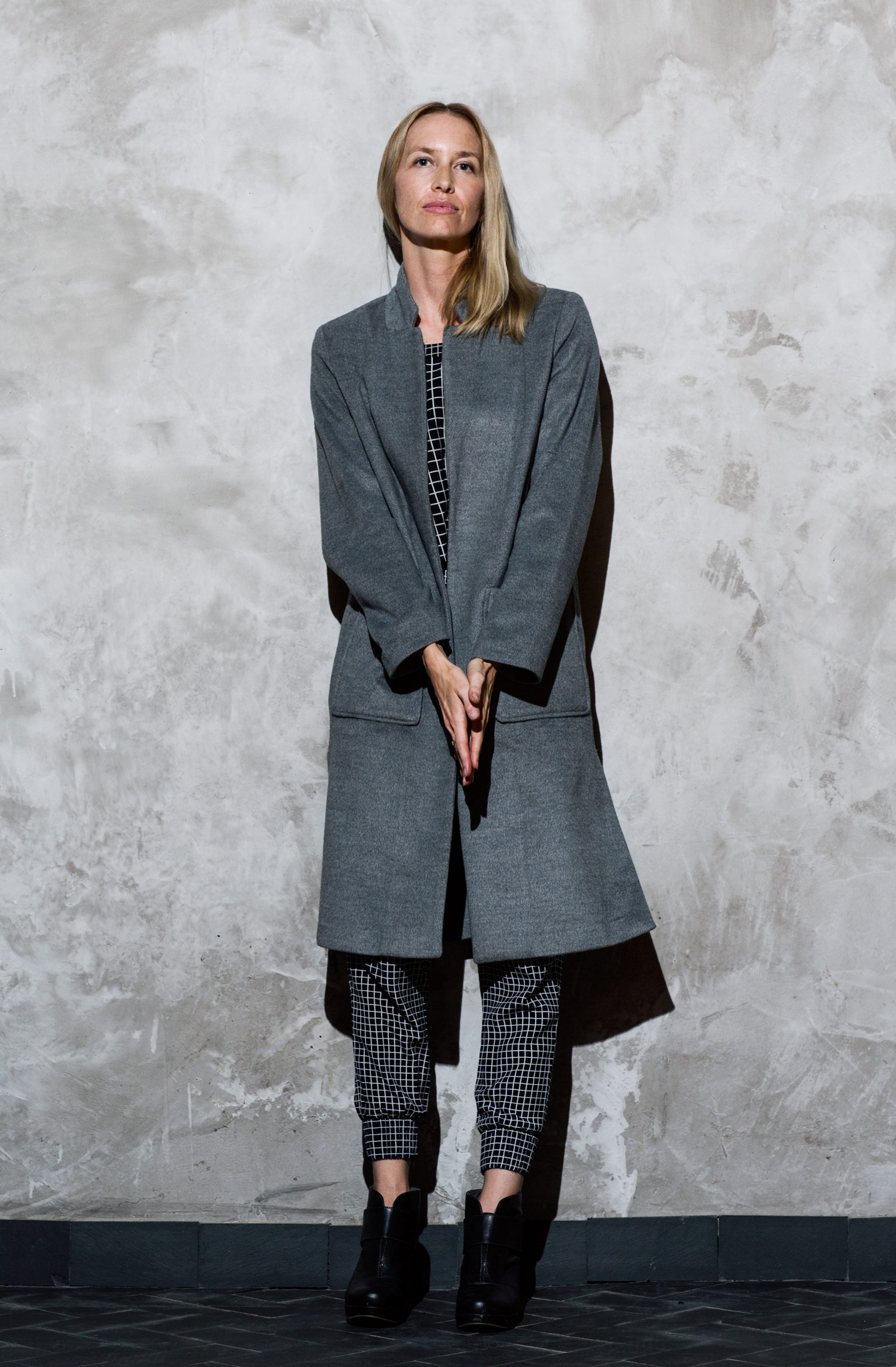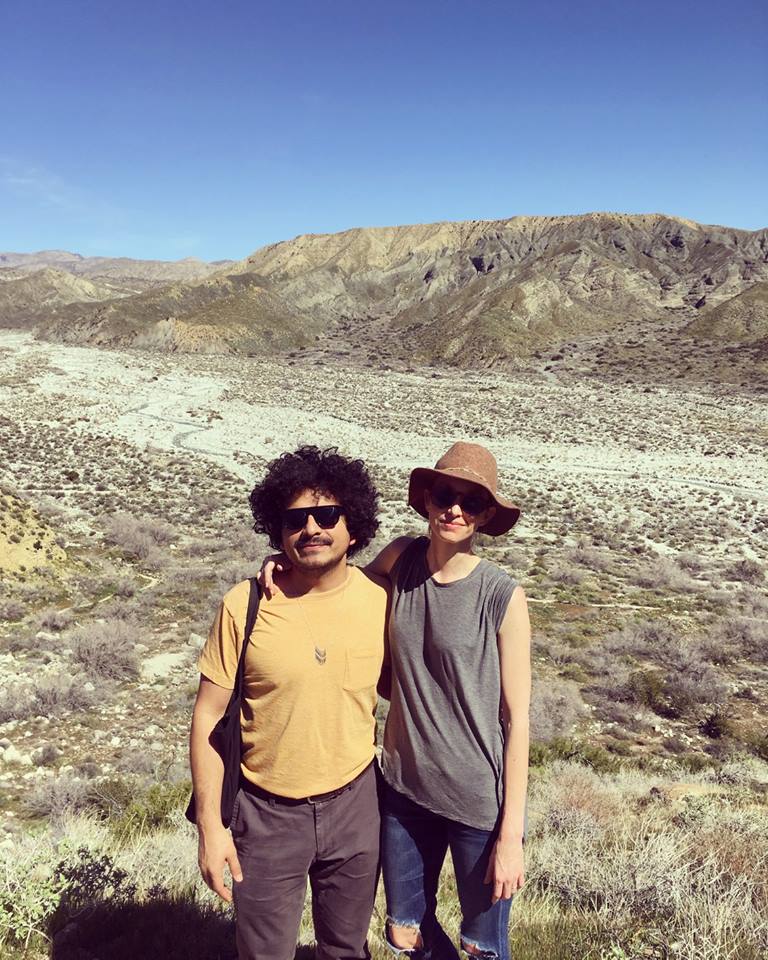By Trever Hagen
Photo by Chris McGuire
Liquid Music brings the virtuoso piano sextet Grand Band to the Ordway Concert Hall in Saint Paul, Minnesota on May 16th. Its Twin Cities debut includes the world premiere of Three Fragile Systems by the composer Missy Mazzoli along with music by the late composer Julius Eastman, Bang on Can co-founder Michael Gordon, Paul Kerekes and Kate Moore. Grand Band’s performance will feature pianists Erika Dohi, David Friend, Paul Kerekes, Blair McMillen, Lisa Moore and Isabelle O’Connell.
The Unconventional Piano Sextet
The mise en scène is delicate yet imposing — six grand pianos silently yin-yang together across center stage. Gentle sleeping giants. Their collective posture is perplexing – while one or two pianos on stage are a common sight, the snoozing huddle of ivories before a Grand Band performance indicates we have little a prior knowledge as to what we might hear. Then the flurry of 60 fingers across 528 keys commences. In a harmonic display of yet-before-unheard piano polyphony, Grand Band shows us they are a super-group not only because of their fluency of expression on the piano, but because of the extra-ordinary sound that only they can make.
This unconventional arrangement of music for six pianos sets Grand Band’s repertoire in its own universe – far outside any existing canon of work for piano. Grand Band’s instrumentation requires dedicated new compositions; commissioned pieces for this ensemble’s singular voice. Yet the audience does not know what to expect when seated for the performance. By eliminating expectation you do away with convention, one of the most reliable, known forms of how we communicate.
What makes 'new music' new?
One is reminded of Ludwig Wittgenstein’s critique of the use of language from past realities to depict contemporary ones. The take away from the Austrian philosopher’s work in the context of ‘new music’ is that while a musical canon is a discourse that connects us with universal imaginations of humanity, there is still a wide gap in that discourse for pieces composed today that tune in the modern soul with old soul, while providing a compass for the future soul. Embracing new musical vocabularies of non-convention offers us sense-making devices for new realities — those particularities of the human condition in place and time.
Certainly synthesis is a path toward 'new' – or at least a step toward innovation. But with any form of innovation understood via genre, ‘newness’ comes only in relation to a display of the rules of past traditions alongside ideas that challenge it. With the new music presented at Grand Band’s performance this month, we see elements of a curious synthesis particularly brought to light by the composer Missy Mazzoli.
Missy Mazzoli by Caroline Tompkins
“Post-Millennial Mozart”
Missy Mazzoli has made a name for herself in numerous musical pathways – prestigious grants, academic positions, as well as forging innovative collaborations. For example, her band Victoire joined with Glen Kotche of Wilco to create the piece Vespers — a beautiful, haunting meditation on religion, magic and ritual, and spirituality. Mazzoli’s pieces rest on her curiosity to explore the depths of human experience and consciousness. This broad vision manifests itself in the complex timbres of her pieces, the intent of harmonic discovery, and the movement between symbolic rupture and settling.
To do this, Mazzoli places her work at the interface of humanity and technology — the constantly evolving process of how humans create and adapt to new technologies. This approach is most clearly seen in her blending of traditional chamber formats as violin-cello-piano along with electronics, distorted guitars and keyboards. But most importantly, Mazzoli is a story-teller. She uses these techniques less as a strategy and more as a natural way a composer invites instruments and motifs to guide the listener through an unfamiliar tale. Listening to Mazzoli’s work, you hear familiar narrative structures with fresh voices and new grammar. I find this appealing because we need new vocabularies to understand our historical moment – to influence it and to report on it. Mazzoli is articulating a near-future world in her music, asking us not to follow but to face the unfolding beauty of non-binary perception.
Read more about Mazzoli’s Three Fragile Systems in an interview with Ines Guanchez for Liquid Music.
Grand Band's Liquid Music Program
In addition to the world premiere of Three Fragile Systems, Grand Band will perform the work of four other composers.
Michael Gordon by Peter Serling
Michael Gordon is a house-hold name amongst enthusiasts of exploratory composition. One of his recent pieces performed by Mantra Pecussion, Timber, was composed for six graduated, amplified, wooden Simantras. Played with mallets and fingertips, the composer showed his ingenuity with a bold use of texture and rhythm. No doubt Gordon’s pursuit of musical rhythmic innovation overlays with his interest in cities – those effervescent tide pools of rhythm and activity. Gordon has collaborated with film-maker Bill Morrison to create the city portraits such as Gotham (a mediation on the aura of New York City) and El Sol Caliente (a commission by the New World Symphony for Miami Beach’s centennial, Gordon’s hometown).
The New Yorker's Alex Ross described Gordon’s music as "the fury of punk rock, the nervous brilliance of free jazz and the intransigence of classical modernism." That is an earful, but balanced in Gordon’s compositions. Grand Band will perform his piece Ode to La Bruja, Hanon, Czerny, Van Cliburn and little gold stars... (or, To Everyone Who Made My Life Miserable, Thank You).
Paul Kerekes by Jennifer Joungblood
Additionally, Grand Band will perform wither by Paul Kerekes, one of co-founders of Grand Band. Kerekes’s work as a composer and performer is diverse. His work has been performed by a growing list including American Composers Orchestra, Da Capo Chamber Players, New Morse Code, Thin Edge New Music Collective, Real Loud, and Exceptet. Beyond performing and composing for Grand Band, he is also a member of the Invisbile Anatomy ensemble. IA is a group that draws on the experience of the human body as the ultimate source of music creation; the primal physicality of this approach is not lost in the edginess and jaggedness of their music. To carry out this intent, the group ties together multiple musical traditions as well as performance art and Fay Wang’s captivating poetry.
The prolific Australian-Dutch performer and composer Kate Moore was commissioned by Grand Band to create the piece Sensitive Spot. While Moore has received a collection of awards to pack her portfolio, she is quick to point out that as much as she works within and through institutions, she also dialogues with alternative music spaces and cultures. For this reason, Moore’s work stands side by side with other composers in seeking out new sounds wherever they may lie. In 2017, Moore broke through new establishment walls as the first woman to win the Matthijs Vermeulen Prize for her composition The Dam. Indeed, as the San Diego Union Tribune put it, “her intent seems to be to create a dream, an alternative reality.”
Finally Grand Band will perform an interpretation of Julius Eastman’s cascading 1979 piece Gay Guerrilla, originally composed for three pianos. Eastman died in 1990, homeless, and it is only in recent years that his work has been more widely championed and disseminated after nearly 26 years of posthumous rest. The inclusion of Gay Guerilla is another lens into a function of new music: to unearth forgotten melodies, reveal alternative musical spaces, and champion new sonic experiences.
Trever Hagen is a writer, researcher and trumpeter living in Minneapolis. His interests lie in memory studies, music therapy and acoustic ecology. Hagen's newest book, "Living in the Merry Ghetto: the music and politics of the Czech underground" will be out on Oxford University Press in 2019.
Grand Band will perform Three Fragile Systems at the Ordway Concert Hall on Wednesday, May 16, 2018 at 7:30pm. Purchase tickets here.
Follow Liquid Music for updates and announcements:
Twitter: @LiquidMusicSPCO (twitter.com/LiquidMusicSPCO)
Instagram: @LiquidMusicSeries (instagram.com/liquidmusicseries)
Facebook: facebook.com/SPCOLiquidMusic
Follow Grand Band updates and announcements:
Official Website: www.grandbandnyc.com
Twitter: @GrandBandNYC (twitter.com/grandbandnyc)
Facebook: www.facebook.com/Grand-Band




